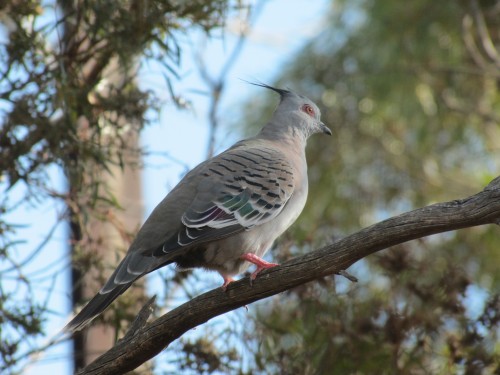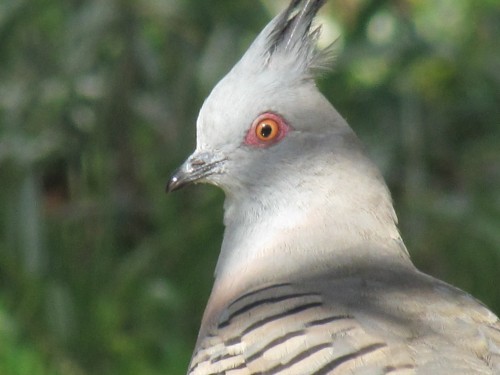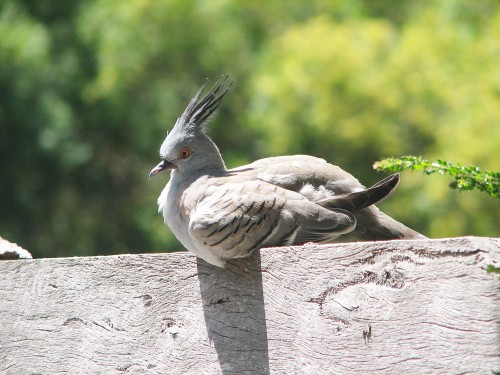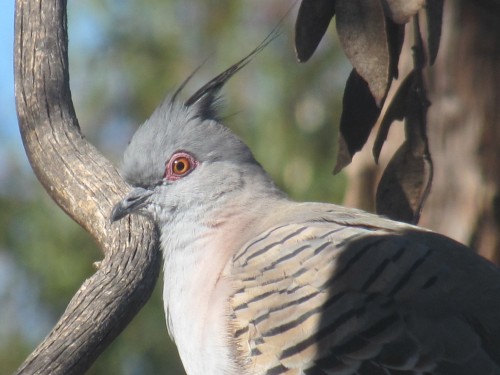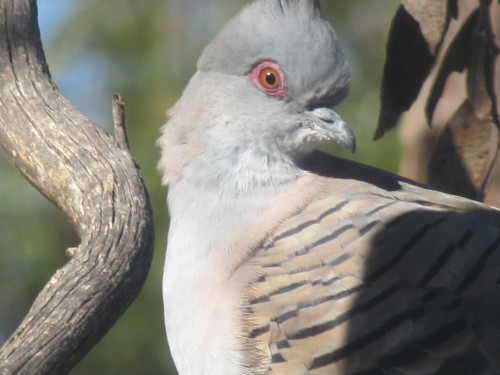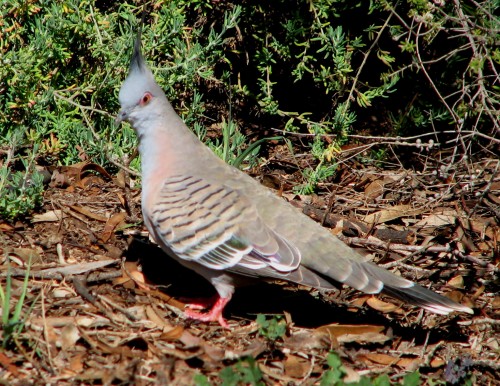Why do baby birds disappear?
One of my regular readers recently asked the question: “Why do baby birds disappear?” We had been corresponding during the recent height of the Australian breeding season. Spring here is coming to a close, but many birds are still actively making nests, sitting on eggs or feeding young in the nest or just out of the nest. This reader observed that many baby birds go missing. What happens to them, she asked.
Here is my reply:
It is very distressing for bird lovers to see the little birds disappear or be killed in some way so soon after hatching or leaving the nest. If we knew the figures, I think we would be horrified by the enormous attrition rate in our fauna, not just birds.
Some possibilities include the following:
1. Removal from the nest by cuckoos. We have several species of cuckoos in Australia. The female lays one egg in a host nest. This could be a thornbill, honeyeater or a range of other species. The host bird hatches the eggs and the baby cuckoo hatches first and it removes all other eggs in the nest in the first hour or so after hatching. It then gets ALL the food from the host parents. Harsh yes – but this is normal, natural cuckoo behaviour.
2. Predation of eggs or chicks: this could be from ravens, crows, currawongs, butcherbirds, hawks and even magpies. Cats, foxes, snakes and lizards, especially goannas, will also raid nests.
3. Predation out of the nest: Once fledged and out of the nest the young birds run the gauntlet of so many hazards including all in number 2 above. Add to those hazards the problem of being hit by speeding cars, wild storms, flying into glass panes (very common), captured by well meaning people and not cared for properly, heavy rain, cold nights and so on.It is a wonder that any survive at all, especially in urban areas. This is in part compensated for by the following strategies:
(a) Laying 3-5 eggs for each clutch as this increases the success rate
(b) cleverly camouflaging the nest – with all my experience I am still fooled by their cryptic nest sites.
(c) breeding two or three times in one season.It would certainly help if all cat owners were responsible and made a run for their animals. This would eliminate some deaths in our fauna, but a far greater problem is the feral cats. There is no control of these and all are very big, strong and cunning. I think compulsory desexing of cats is the way to go, but it would only be a start. Catching all the feral cats is probably not feasible. Making sure no more are added to their ranks will be a good start though.
Related articles:
- Common Blackbirds – the article that started it all. The many comments are very interesting reading.
- Do Blackbirds Swoop? How to deal with aggressive bird behaviour – another article I wrote about Blackbirds. This one also created a great deal of interest with many interesting comments.
- Magpies behaving badly – Australian Magpies have a bad reputation during breeding season.
- A bit on the nose – an amusing incident involving a cyclist, a swooping Red Wattlebird and a nose.
- Anyone for a swim? Forget it baby Blackbird. Now this is something different.
Bird Word: Casual
Casual: a bird that has been observed outside its normal range.
I am convinced that most bird species do not read the Field Guides. They do not observe where they are supposed to be. They wander off the beaten track. They get lost. Or they decide to have a sea-change or a tree-change.
Whatever.
One thing is certain; many species can be observed from time to time way outside their normal range, where they are usually found. The Striped Honeyeater is a case in point. It is a bird mainly of the inland, in drier woodland scrubs, mallee associations and mulga.
The Striped Honeyeater has visited our garden on a number of occasions. It even nested quite close to our house. This record is the most south westerly occurence of this species. It cannot be classed as resident in this area as it only visits every few years. Its appearance here is classed as “casual.” One has to travel 50 – 100 km NE to observe it in its normal range.
The Spiny Cheeked Honeyeater (shown below) is another bird of the drier parts of Australia.
For more articles in this series check out the Glossary of Bird Words here.
Crested Pigeons as pet birds
I recently had a rather interesting comment on an earlier post of mine about Crested Pigeons (see Great Birding Moments #5 Crested Pigeons).
Karen wrote:
I have a crested pigeon sitting on my shoulder at the moment. I went for a walk one morning and saw her on the footpath. She ran towards me, not usual pigeon behaviour. I picked her up, she cooed and closed her eyes. I took her home and fed her and she has stayed. She follows me around the house and is the most inquisitive bird I have ever known. She is quite content to be scratched around the head and calls to me whenever I enter the room. She was obviously someone’s pet but I had no success in locating them. I originally had intended to feed her up and let her go again but she is so tame she would have been a danger to herself. She lives with my 3 cockatiels and probably thinks that she is one.
What an amazing experience! Karen is certainly right in deducing that it is someone’s pet, because the behaviour is certainly consistent with a bird that has been used to being handled.
Crested Pigeons are reasonably common in aviculture, especially in zoo collections. This species normally requires a large planted aviary and will breed readily in captivity.
I find it interesting that it is quite at ease in her home and with the Cockatiels. It must make her day very pleasant to have such a lovely team of bird friends to keep her company.
She is probably right that it is safer in her home rather than fending for itself in the wild. If released, it would probably be taken by a hawk very quickly as it would not be as alert to the dangers presented by living life in the wild.
Please note: the laws about keeping native Australian birds in captivity varies from state to state. Please check with the relevant authorities before adopting birds. Your state National Parks and Wildlife website is a good place to start. You local pet shop should also be able to help.
Update: This article was edited and updated in July 2015. The photos below were also added.
Crested Pigeon caught by surprise
Crested Pigeons are common birds in our garden and on our five acre block of land. They regularly come to visit the bird bath and have been breeding regularly over the years. We often see 15 to 20 or more sitting in a loose flock on the power lines bordering our property.
Yesterday, while hanging out the washing on the clothes line I observed one very surprised Crested Pigeon. He flew down from a nearby tree, under the clothes already on the line and landed not more than a metre from where I stood. For a brief second he paused, looked at me and then, a little startled, flew back to the tree again.
I enjoy hanging out the washing. It gives me a break from the computer and gets me fresh air. It also gets me out where the birds are, and this I enjoy because over the years I have made some great observations while completing this task. The eyes are naturally looking up and I see things like eagles, kites, hawks, swallows, ibises and many other birds flying overhead. I live in hope of someday seeing some swifts in this way too.
Bird Word: Cap
- Cap: a patch of colour on the top of the head or the crown of a bird.
Some Australian birds have a distinctive cap on the crown of their head. In some cases this helps greatly in identifying the species, and in others it lends itself to the common name of the bird.
Here are some examples:
- Red-Capped Robin
- Red-Capped Plover
- Plum-Capped Finch (more commonly called the Plum-Headed Finch)
In other cases it is not the word “cap” that is used, but the alternative word “crown.” Here are some examples:
- Purple-Crowned Lorikeet
- Chestnut-Crowned Babbler
- Grey-Crowned Babbler
- Purple-Crowned Fairy-Wren
Look carefully at the head of the bird you are trying to identify. It can be very useful and even diagnostic.
For more in this series of articles check out the Glossary of Bird Words here.


